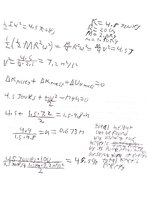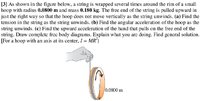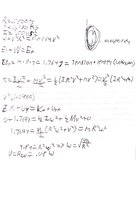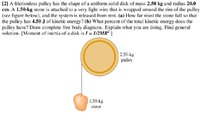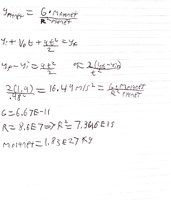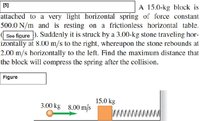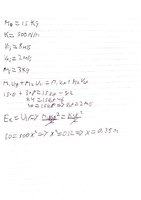At [3]. Energy equations won't help you find accelerations. Also the hoop has no translational kinetic enegry since it stays in place . It has only rotational kinetic energy. To find accelerations you need to use Newton's laws .
F-W=M*a=0 a is the acceleration of the center of mass of the hoop which is 0 because it says it stays in place , W=M*g weight of hoop, F tension of the string.
Newtons second law for rotation in this case is F*R=I*a' , R the radius of the loop , a' the angular acceleration of the hoop. Also at the point the string "leaves" the hoop you can calculate the total acceleration of that point which is atot=a+a'*R=a'*R,
a'*R=at is the tangential acceleration. The unwinded string has the same acceleration in every point because it can't be stretched ,which is the accleration it has when it "leaves" the hoop (atot). So the point ,where the hand is pulling ,has acceleration atot which is the accleration of the hand , as well. The answers are a) F=W=M*g=1.77 N , b) angular acceleration a'=g/R=125rad/s^2 , c) acceleration of the hand a=g*R/R=g=9,81m/s^2

